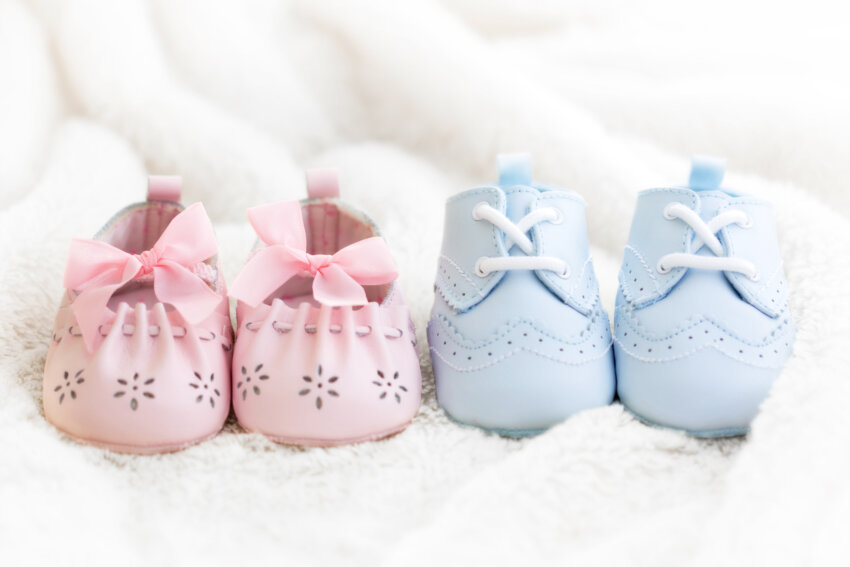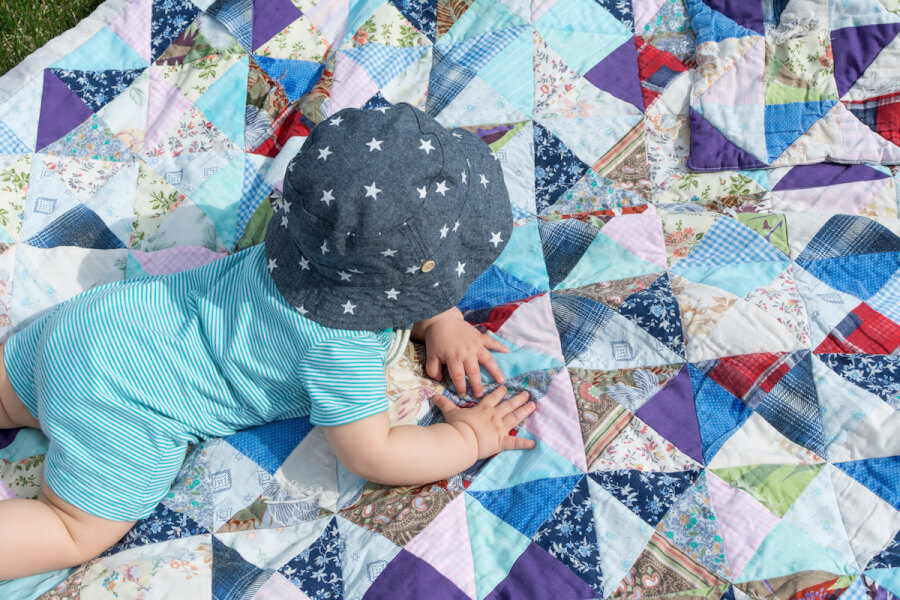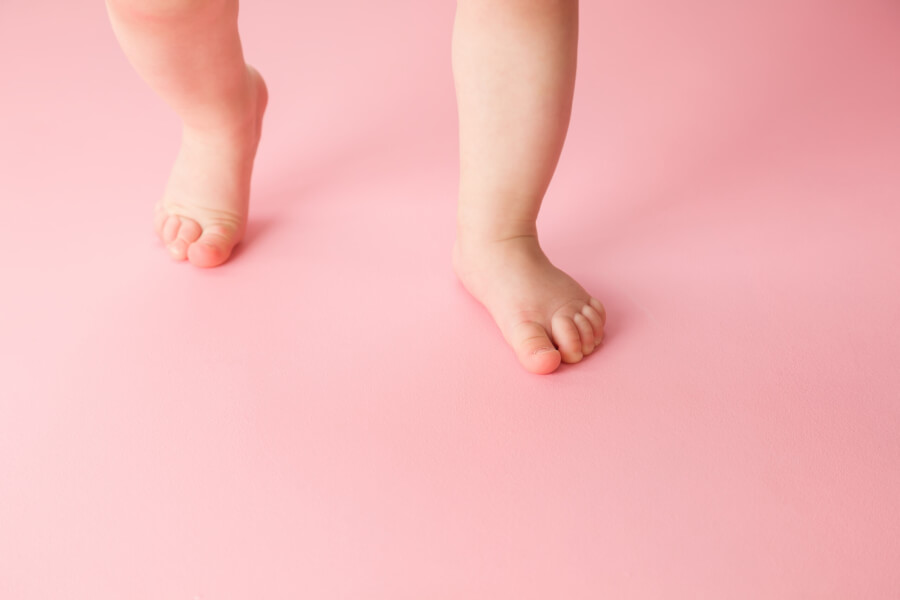 Walking is a significant milestone in a child’s life, setting them on a course toward independence. As parents look forward to this special moment, they want to know when they can expect their child’s first independent steps. The short answer is it depends on a variety of factors including the baby’s temperament, risk aversion and other variables. While some infants can walk as early as nine months, typically, infants should be pulling to stand and taking steps while holding onto objects, or “cruising,” by their first birthday.
Walking is a significant milestone in a child’s life, setting them on a course toward independence. As parents look forward to this special moment, they want to know when they can expect their child’s first independent steps. The short answer is it depends on a variety of factors including the baby’s temperament, risk aversion and other variables. While some infants can walk as early as nine months, typically, infants should be pulling to stand and taking steps while holding onto objects, or “cruising,” by their first birthday.
Temperament differences may cause children to delay independent steps even when they’re very skilled at cruising. For example, children hesitant around new situations may be more likely to hold onto something until they feel very comfortable taking those independent steps compared with little daredevils who are fine taking a few rushed steps before falling over. Most typically developing children will take independent steps by 15 months of age. This does not break down predictably by biologic sex.
As babies develop their motor skills, it’s also important to think about the safety of different types of baby jumper and activity center equipment.
Stationary bouncers, “exersaucers” and stationary activity chairs.
Generally, if they are in good condition and sold by a major manufacturer, stationary bouncers, “exersaucers” and stationary activity chairs, can be safely used for short periods of time under supervision once babies are old enough to have good head and trunk control — generally six months or older. They are not safe for sleep or unsupervised play.
Ideally, with these types of activity centers, your baby’s feet should be able to reach the floor with their feet flat on the ground. Prolonged time in these and other seating devices, however, may cause temporary delays in motor development, or temporary abnormalities in gait — such as increased toe walking in the case of bouncers.
Saucer-type walkers.
Saucer-type walkers with wheels that enable babies to move about before walking on their own are dangerous. They pose a risk of falling and are particularly prone to toppling and causing head injury, especially if used around stairs. While these types of walkers are no longer widely available, it’s important to be aware that they are dangerous if you should come across one at a yard sale or flea market.
Push-type walkers.
Push-type walkers are not as dangerous, but still give children mobility beyond their developmental capabilities and should only be used with direct supervision and away from stairs.
Staying aware.
When purchasing any baby or child product, you should always register the product so you can be informed about any safety concerns or potential recalls. There are also some websites like safekids.org where you can check for recalls. These sites are also beneficial for making sure there are no reported safety issues before buying anything second-hand or using a hand-me-down.
Shoes or no shoes in the house?
As long as the floors are clean and safe without sharp objects like glass, it should be fine for your baby to walk barefoot in the home. Sometimes babies have a little better balance when they’re barefoot or in soft shoes because they get more of that walking sensation. Covering or uncovering your baby’s feet as they roam about the home is typically left to the parents’ discretion.
What are the best ways to help babies learn to walk?
Brief, supervised periods of “tummy time,” or time for your little one to lay on their tummies briefly while they’re awake, can help your baby develop their core muscles and head control.
Much of a baby’s muscle development happens when they’re on their stomachs and are trying to push up and hold their heads up. Giving your child tummy time will help their upper body strength, which is important later when they try to sit and then stand and walk. Early on, even in their immediate newborn period, parents can start doing this as long as there is direct adult supervision.
Babies usually won’t like it very much at first because they’re not able to push their head up, so their face is kind of smooshed and they’ll fuss, so they may only do it for a few minutes. As they get more musculature and more skills, they’ll enjoy it more and you can place them on the floor in a safe, adequately baby-proofed environment with interesting toys and low furniture where you will be supervising their activity. This will allow for your child to explore without you always having to say “no!”
Interact with them at their level and praise and encourage efforts to try new things. It may be challenging, but it’s best to try to not overreact to falls.
In contrast to giving your baby time on their stomach for play, when your baby is sleeping, you want to lay them flat on their back as this is one of the measures proven to reduce the risk for sudden infant death syndrome, or SIDS. Laying on the back is the safest sleep position for babies.
Bowlegs in babies: Is it normal or not?
Many parents ask if it’s normal for a baby’s legs to be slightly bowed. The answer is it’s typical for infants. Often, it may be more noticeable with early walkers — babies who are walking at 9–11 months. Babies do have a little bit of a bowlegged stance and as they walk and put weight on their legs, they do straighten out. Then, when they reach preschool age, they typically become a little knock-kneed — where their knees angled in a bit. Once in elementary school, children’s knees straighten into the typical adult stance, which is slightly knock-kneed.
Why would a baby be late in their walking development?
There are various reasons babies may be late in their walking development.
Low birth weight and prematurity are common reasons for delay in motor development.
Prolonged illness or hospitalization may also cause delays due to weak muscles and overall deconditioning. For the above issues, children may benefit from physical therapy to encourage catch-up in their walking development.
Conditions associated with global developmental delay such as Down syndrome and fetal alcohol spectrum disorders can also be associated with walking delays. This is also true of babies with fragile X syndrome — a genetic condition that causes learning disabilities and developmental delays. According to the Centers for Disease Control and Prevention (CDC), on average, boys are diagnosed with this syndrome at 35 to 37 months and girls at 42 months.
Less commonly, neurologic and neuromuscular conditions such as spina bifida, tethered spinal cord syndrome (a disorder in which the spinal cord is attached to the tissues of the spine, restricting the spinal cord movement), neonatal stroke, cerebral palsy and muscular dystrophy, may account for developmental delay, but often, there would be other signs for these conditions as well. However, for some milder forms of these conditions, such as tethered cord syndrome, delayed walking may be the first sign.
If your 15-month-old toddler has not begun to take independent steps yet, it doesn’t necessarily mean there is something amiss. Sometimes, it comes down to temperament. If a child is cruising well, but seems to always have a finger on something, that child may have the motor skills to walk, but is just more tentative about falling. Generally though, a child who is not taking independent steps at 15-months-old should be evaluated by their pediatrician to check for other signs or clues that may point to an underlying concern.
Wellness visits with your pediatrician.
If you have any concerns about development, visit your pediatrician for a wellness checkup. These visits are intentionally scheduled for children at specific times in their development — nine months, 12 months, 15 months and 18 months — to check on their developmental progress.
At these visits, your pediatrician will typically check all aspects of your baby’s development and perform a general exam to identify health concerns. Specific to walking, they will examine the size and tone of your baby’s muscles as well as checking their flexibility and reflexes and to determine if anything needs further evaluation. To make an appointment with a UT Health San Antonio General Pediatrics physician, click here.
To learn more about developmental milestones, visit this Centers for Disease Control and Prevention website.





